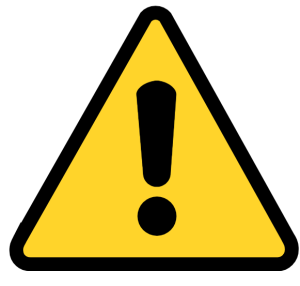Learn how to fix the “Docker Error ContainerConfig” Issue. Our Docker Support team is here to help you with your questions and concerns.
How to Fix the “Docker Error ContainerConfig”
Have you been having trouble with the “Docker Error ContainerConfig” message?
 According to our Experts, this can be frustrating as it’s a generic error that doesn’t provide much detail.
According to our Experts, this can be frustrating as it’s a generic error that doesn’t provide much detail.
This error usually indicates an issue with the configuration of a Docker container, often related to the Docker Compose file or the underlying Docker engine.
Today, we are going to explore the common causes of this error and the steps to resolve it.
An Overview:
- Common Causes and Solutions
- Troubleshooting Steps
- Additional Tips
- Common Pitfalls to Avoid
- Tools and Resources for Docker Troubleshooting
Common Causes and Solutions
- Invalid or Missing Configuration Parameters
The configuration parameters provided for the container, such as environment variables, volume mounts, or network settings, may be incorrect or incomplete.
Fix: Review the Docker run command or Docker Compose file for any mistakes. Ensure that all required parameters are specified and correctly formatted.
- Incorrect Dockerfile Configuration
Issues in the Dockerfile used to build the container image, such as incorrect syntax or invalid instructions, could be the cause behind the error.
Fix: Check the Dockerfile for syntax errors or misconfigurations. Ensure all instructions are valid, and paths are correct.
- Docker Image Issues
The Docker image being used might have been corrupted or improperly built.
Fix: Rebuild the Docker image to ensure it is correctly built. Use the following command:
docker build -t our-image-name - Resource Constraints
The container may be requesting more resources (like memory or CPU) than are available on the host system.
Fix: Check the resource constraints and adjust them if necessary. Use the `–memory` and `–cpus` options in the Docker run command:
docker run --memory=512m --cpus=1 your-image-name - Docker Daemon Issues
There might be issues with the Docker daemon itself, such as configuration problems or bugs.
Fix: Restart the Docker daemon and check the Docker logs for more information. Restart Docker with:
sudo systemctl restart docker - File or Directory Permissions
The container may not have the needed permissions to access certain files or directories.
Fix: Check and adjust the file and directory permissions to ensure the container can access them. For example:
chmod 755 /path/to/directory - Networking Issues
Problems with the network configuration or connectivity could be affecting the container.
Fix: Verify network settings and connectivity. Ensure that the container is correctly configured to connect to the required networks.
Troubleshooting Steps
- Verify that the `docker-compose.yml` file is correctly formatted and has no syntax errors. We can also use a linter or validation tool to identify potential issues.
- Ensure that the specified images are available and can be pulled correctly. Also, check image tags and versions to avoid conflicts.
- Review service configurations for conflicts in port mappings, environment variables, or volumes. Look out for duplicate service names that might cause issues.
- Check Docker daemon logs for any errors or warnings. Make sure Docker has sufficient resources (CPU, memory, disk space).
- Keep Docker and Docker Compose up-to-date to prevent compatibility issues and benefit from the latest bug fixes.
Additional Tips
- Create a minimal Docker Compose file with a single service to isolate the problem and determine its cause.
- Ensure that any dependencies required by the application are correctly installed within the container.
- Inspect the container’s logs for more detailed error messages that can provide clues to the issue.
Common Pitfalls to Avoid
Avoiding common mistakes when working with Docker can save time and prevent errors. Here are some frequent pitfalls and tips to avoid them:
- Incorrect YAML Formatting
Errors from missing or incorrect quotes in `docker-compose.yml`.
Fix: Always use proper quotes around strings with special characters and validate YAML files with linters.
- Improper Docker Commands
Misusing options like `–network` or `–volume` leads to configuration problems.
Fix: Regularly check command syntax using `docker –help` and refer to official documentation.
- Deprecated Features
Relying on outdated Docker features that may no longer be supported.
Fix: Keep Docker up to date and replace deprecated features with newer alternatives.
- Misconfigured Environment Variables
Incorrect or missing environment variables cause application failures.
Fix: Use a `.env` file for consistency and validate variable values before deploying.
- Volume Mounting Errors
Using unclear or incorrect volume paths leads to data inaccessibility.
Fix: Use absolute paths for volume mounts and ensure proper permissions.
- Network Misconfigurations
Poor network setups can isolate containers or block services.
Fix: Define networks explicitly, use network aliases, and test connectivity.
Tools and Resources for Docker Troubleshooting
We can also use tools to diagnose and resolve Docker issues:
- Docker Built-in Tools
- docker logs: Check application logs for errors.
- docker inspect: Get detailed information about containers, networks, and more.
- docker-compose config: Validate Docker Compose file syntax.
- Third-Party Tools:
- Portainer
- Grafana & Loki
- Sysdig
- Validation Tools
- YAML Linters
- Docker Bench for Security
[Need assistance with a different issue? Our team is available 24/7.]
Conclusion
By understanding the common causes and following these troubleshooting steps, we can easily resolve the “Docker Error ContainerConfig” and ensure our Docker containers run smoothly.
In brief, our Support Experts demonstrated how to fix the “Docker Error ContainerConfig” issue.







0 Comments